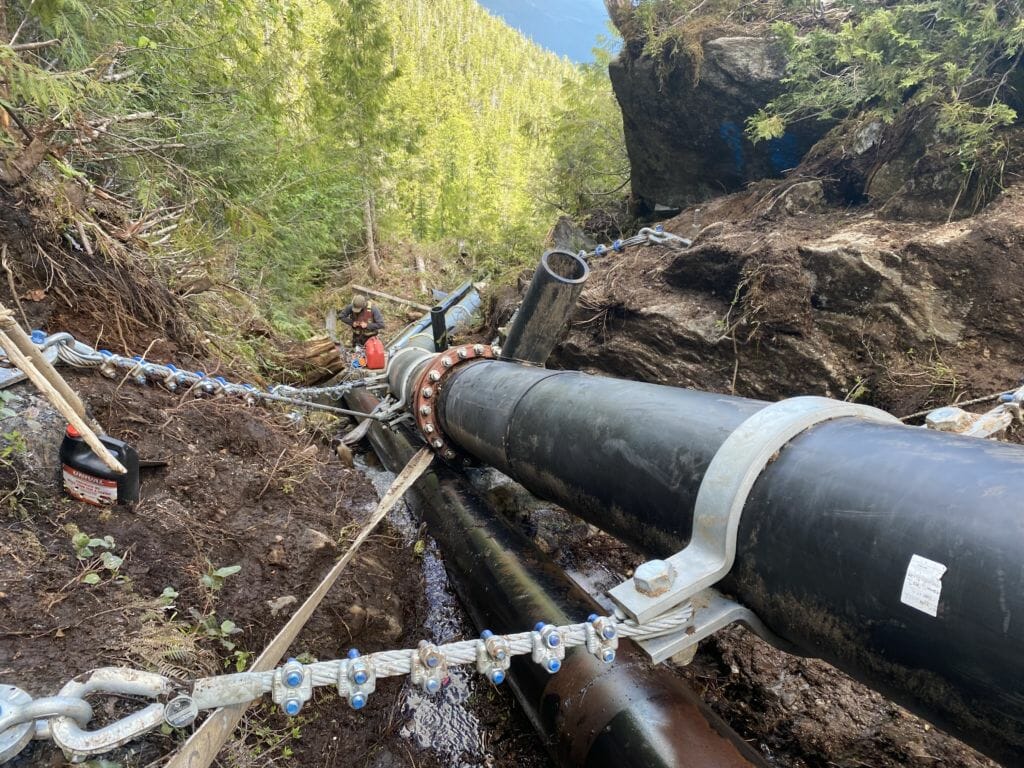Estimated Reading time

5 Mins
Paths to Energy Sovereignty: A Case for Investment in Renewable Energy
Coast Funds is working with First Nations to understand community priorities, energy needs, and options for transitioning to renewable energy. At a recent conference, sustainable energy manager Shehin Rahemtulla shared early findings with community members and supporters.

Within the Great Bear Rainforest and Haida Gwaii, there are 11 “off grid” First Nation communities that aren’t connected to British Columbia’s electrical grid. These communities generate their electricity locally and many rely on diesel fuel for all or part of their energy needs.
 To gain a better understanding of these First Nations’ priorities, and the challenges and opportunities in transitioning to renewable energy, Coast Funds staff members spoke with several community leaders, who generously shared their perspectives and data on their communities’ electricity needs, diesel costs, and goals for their energy systems.
To gain a better understanding of these First Nations’ priorities, and the challenges and opportunities in transitioning to renewable energy, Coast Funds staff members spoke with several community leaders, who generously shared their perspectives and data on their communities’ electricity needs, diesel costs, and goals for their energy systems.
Sustainable energy manager Shehin Rahemtulla shared Coast Funds’ early findings with community members and delegates at the Renewables in Remote Communities conference, hosted by the Pembina Institute and held in Kwanlin Dün Cultural Centre in Whitehorse, Yukon. In her presentation, Shehin highlighted the complexities inherent in diesel dependence and summarized her findings on First Nations’ priorities, energy needs, options for transitioning to renewable energy, and a financial comparison between renewables and continued reliance on diesel.
The High Cost of Diesel Dependence
There are 11 First Nations in coastal British Columbia that rely on diesel to generate at least some of their electricity. Together, these communities purchase, transport, and burn approximately 15.3 million litres of diesel fuel each year.
Historically, many of these communities have had few opportunities to pursue other energy options and have had to contend with volatile fuel costs, air and noise pollution, and risks and costs associated with accidents, spills, and delivery delays.
In interviews, First Nation leaders and staff members identified four main motivations for transitioning to renewable energy:
- Lack of energy sovereignty, self-determination, and needing to rely on imported fuel.
- Energy poverty and high costs for First Nations and community members, meaning less money is available for other priorities.
- Negative impacts on health and well-being, including noise and air pollution from generators, as well as brownouts and power outages.
- Negative impacts on the environment, including greenhouse gas emissions, fuel spills, and disruptions to wildlife.
Diesel fuel is a major expense for First Nation governments, as well as for BC Hydro, Indigenous Services Canada, and other entities that subsidize energy for remote communities.
An Opportunity to Save $62 Million
Together, these 11 First Nations spend more than $20 million per year on diesel fuel to generate electricity. In a business-as-usual scenario, the cumulative cost of powering their communities with diesel, at current consumption levels, will rise to at least $692 million by 2045. Because this estimate doesn’t account for population growth or for the costs of transporting and storing the fuel, subsidies, or cleanups, the true cost of diesel is likely much higher.
On the other hand, developing renewable energy sources comes with higher up-front costs for materials and construction, especially in remote communities. However, the cost of operating renewable energy projects is significantly less than diesel-based energy.
To transition to the renewable energy systems (hydro, biomass, solar, energy storage) communities have identified, Coast Funds estimates it would cost $160 million in up-front construction costs and $13 million per year in operation costs. Over 25 years, renewable energy costs $629 million by 2045 – a savings of $62 million.
Investing in a Renewable Future
Beyond cost savings, many First Nation leaders shared the view that renewable energy projects align with their communities’ values and priorities, support self-sufficiency and energy sovereignty, and create opportunities for jobs and economic growth.
Many coastal First Nations are making major investments in renewable energy. Through the Renewable Energy for Remote Communities program, delivered by Coast Funds and the Fraser Basin Council, two coastal First Nations have invested in hydropower facilities, greatly reducing their need for diesel:
- Dzawada̱ʼenux̱w First Nation is building a new 350-kilowatt hydropower facility for U’kwanalis, a village located on Gwa’yi Kingcome River, northeast of Broughton Island. Once complete, the facility will reduce the community’s diesel consumption by 97 per cent, eliminating an estimated 30,200 tonnes of greenhouse gas emissions over the facility’s lifetime.
- Kitasoo / Xai’xais Nation has completed an upgrade to their Klemtu hydro facility, increasing their generating capacity from 600 kilowatts to 1,700 kilowatts, enabling new investments in housing and economic development, and reducing greenhouse gas emissions by 145,996 tonnes over the facility’s lifetime.
Encouragingly, the federal and provincial government are making budget commitments to support First Nations and remote communities in transitioning from diesel to renewable energy.
In April, the Government of Canada announced $300 million in funding available for clean energy projects in Indigenous, rural, and remote communities. The funding is available until 2027.
Community Energy for Diesel Reduction
In August 2022, the Ministry of Energy, Mines and Low Carbon Innovation, New Relationship Trust, and Coast Funds announced $29 million in new funding for First Nations’ investments in community energy planning, energy efficiency measures, and sustainable energy development, through the Community Energy Diesel Reduction (CEDR) program.
For more information about Coast Funds’ research on energy systems, stay tuned for the release of Paths to Energy Sovereignty, an upcoming report on the impacts of diesel and the opportunities for investment in clean, reliable renewable energy systems. The full report, including case studies and a financial comparison between diesel-based and renewable energy systems, will be released later this year.
